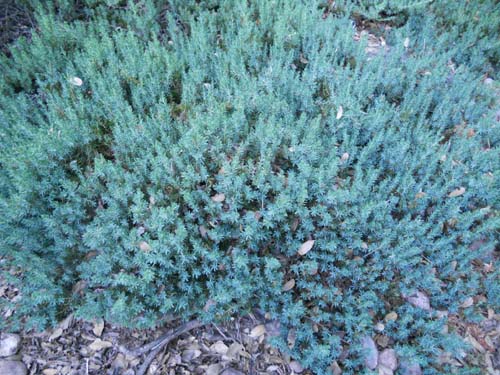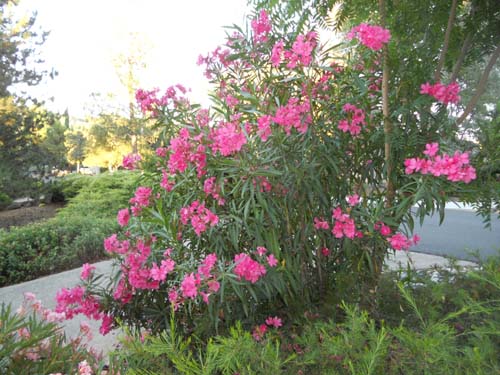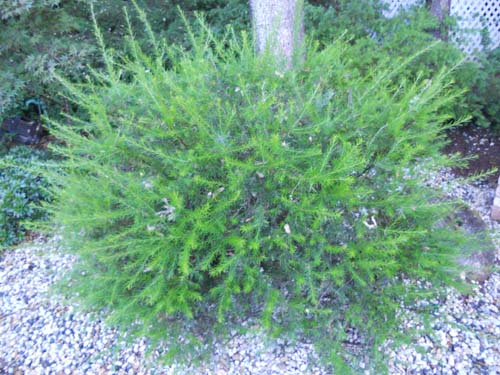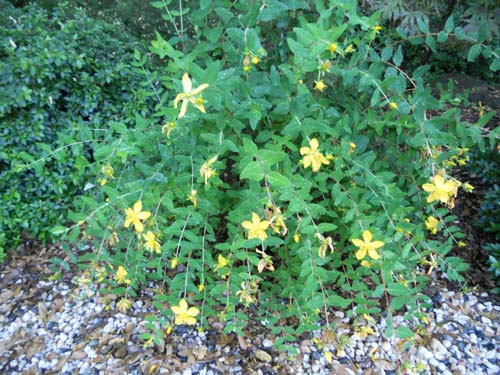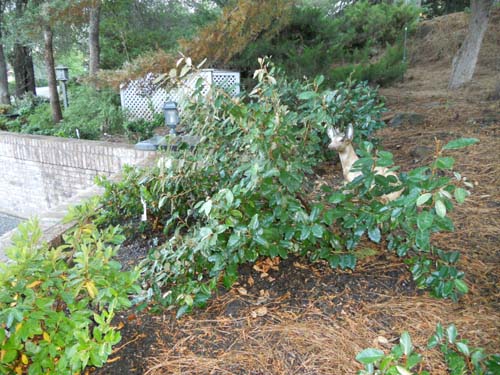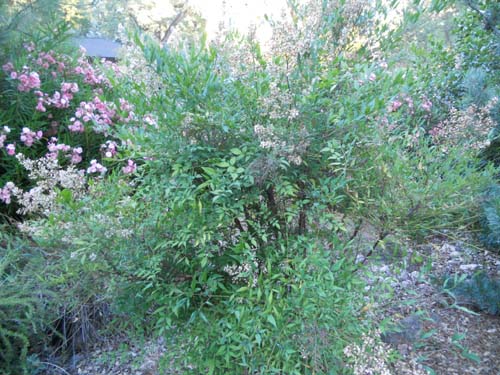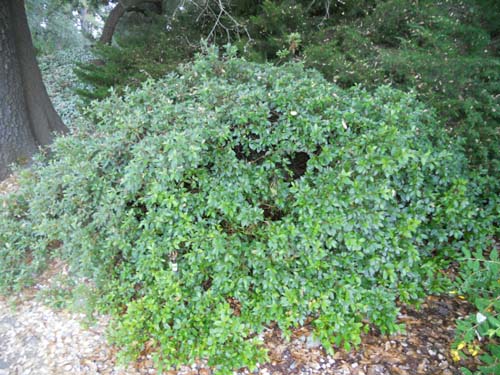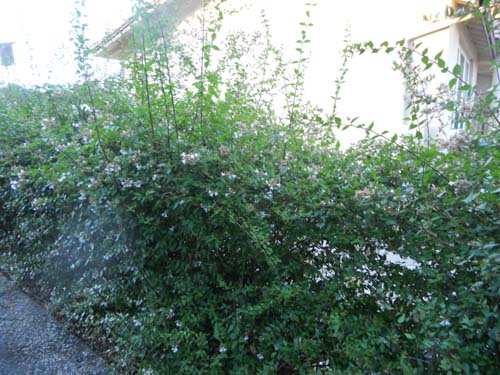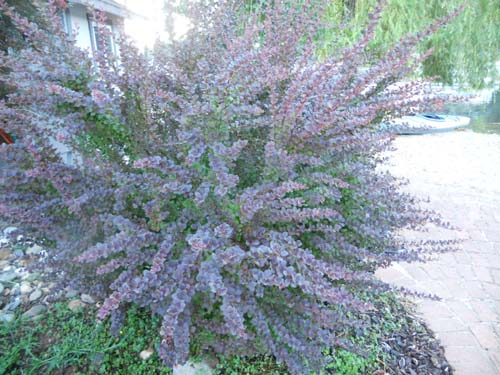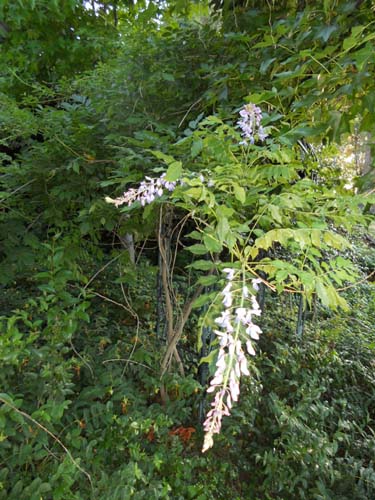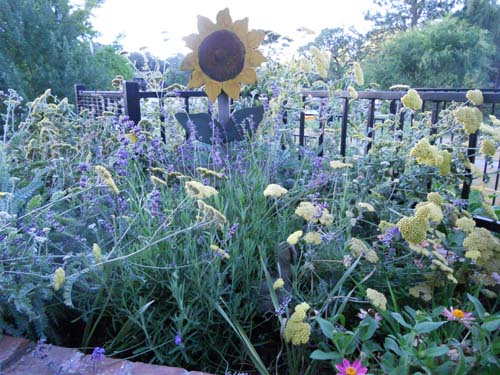Deer Resistant Plants for the Foothills
Deer Resistant Plants for the Foothills
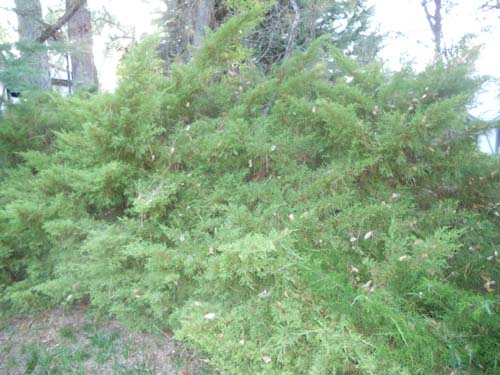
Deer are everywhere in the Sierra Foothills, and nowhere are they more numerous than at Lake of the Pines, California, where they move around through the un-fenced yards, lordly and arrogant, eating just about everything that grows.
Can you actually establish landscaping, green and lush, that is impervious to the plague of deer? Yes.
These are shrubs and trees reputed to be deer resistant, though those of us gardening in our area know that some deer will eat almost anything, and that all deer will eat almost anything if they get hungry enough. I have seen hungry deer nibbling on the needle tips of junipers, though I have never seen them touch an oleander.
The worst offenders within deer herds are the fawns. Like most babies, the fawns haven’t yet learned what to avoid, and they put anything into their mouths. Because of their small size, the lowest and most tender growth of almost any kind of plant gets the special attention of these youngsters. You might think about protecting newly installed “deer resistant” plants for the first year with screen or fencing.
Other trouble makers are the bucks during the fall “season.” These sex-crazed lads will tear up plants just for the hell of it, and they will use your new trees to tune up their antlers for the mating wars to come. You might think about wrapping the trunks of newly installed trees with burlap until the lust dies down.
All that said, here are my 12 favorite deer resistant plants for the lower foothills. The photos are all from my own un-fenced yard at Lake of the Pines. I am putting my plants where the deer mouths are. These are July photos, so most of the specimens have already lost their flowers.
A DOZEN FAVORITE DEER RESISTANT PLANTS FOR THE CALIFORNIA FOOTHILLS
Juniper. Lots of people don’t like juniper because they are scratchy and boring, but many types have adapted to dry conditions and take little water to hang on through the summer. Juniper can form screening hedges and hold down problematic hillsides.
There are also “softer” and low growing species of juniper.
Oleander. Thank God for oleanders in July. Oleanders are profuse boomers and provide the most reliable color in the summer landscape. They are, as you know, poisonous, so don’t eat them. The deer are also well aware of the toxicity.
Grevillea. Sturdy and reliable. My favorite types have delicate pink flowers on them almost all year. They are prickly.
St John’s Wort. A surprise discovery. This plant is 3 years old.
Elaegnus. This is a new addition, a “silverberry” variety. We put it in this year for the first time. So far so good.
Nandina, aka Heavenly Bamboo. Not a real bamboo, and it will not get out of control. You can trim it like a hedge if that’s your thing.
Azelea (and rhododendrums) The deer will eat some species, and they will eat young, tender new growth, but they leave old leathery azeleas alone unless they are desparately hungry.
Abelia. This is glossy abelia. Takes very little water.
Barberry. Gorgeous red foliage to contrast with the green and grey-green on most foothill shrubs. Lots of thorns. Ouch.
Wisteria. Wisteria grows so high and so fast that it will soon grow itself out of reach. Of couse, if you don’t keep it under control, it will eat your house.
Yarrow, CJ’s favorite, and Lavender, my favorite.
Dafodils and Narcissus. These are not shrubs, but they do come back year after year to enliven the early spring. Each year you should plant new bulbs.
If you enjoyed reading this article, and want to find out more,
just CALL CJ at (530-906-4715) or subscribe below.
Stay Informed
Get the latest posts delivered direct to your email

